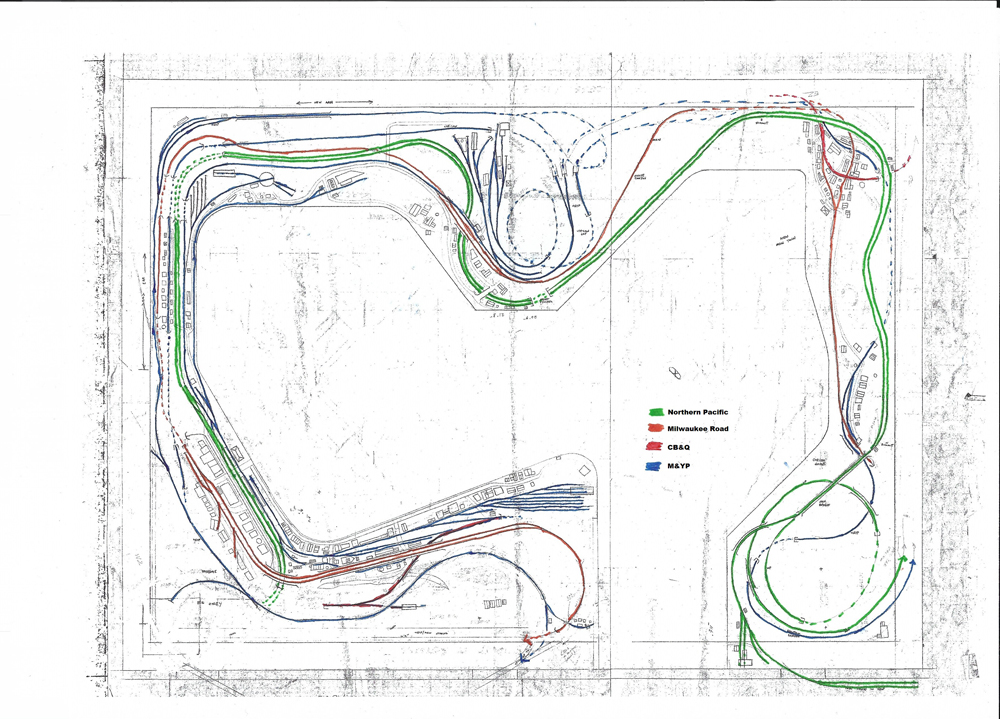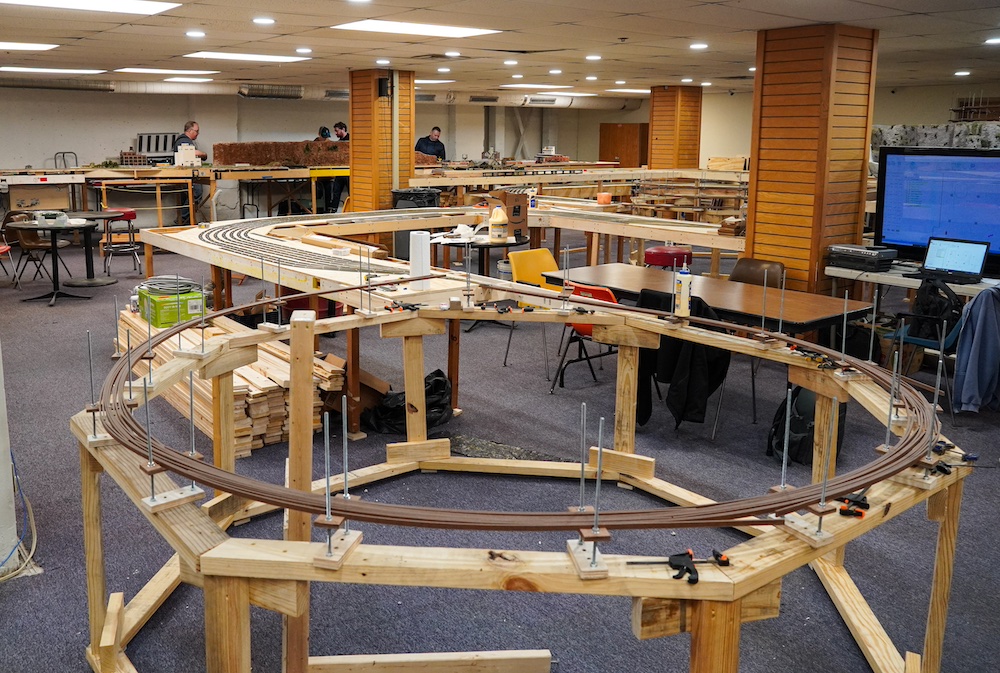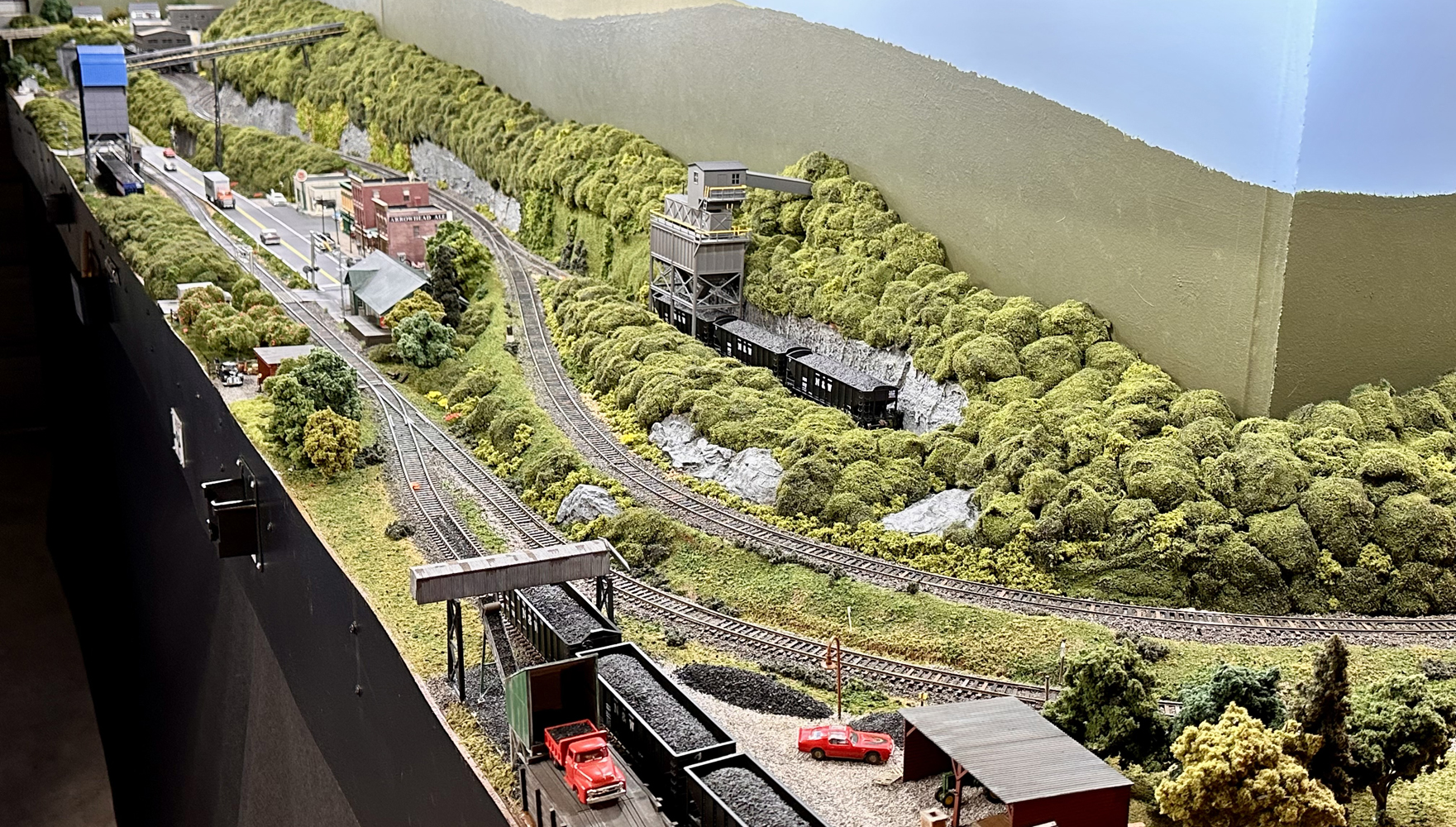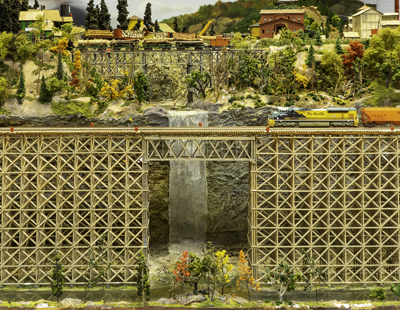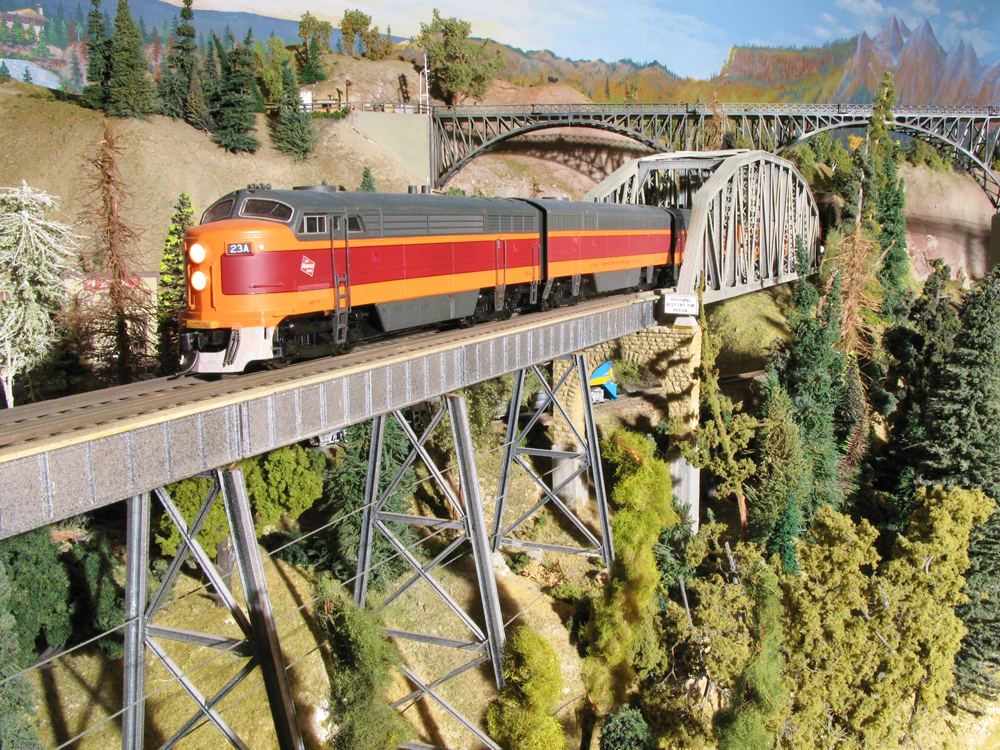
Yogo Peak, at 8,812 feet above sea level, is located in the Little Belt Mountains on the Judith Basin between Lewiston and Great Falls, Mont. Winding its way through the basin is a tributary of the Missouri River known as the Musselshell River, named by the Lewis & Clark Expedition in 1805 for its abundance of freshwater mussels found along its banks.
The inspiration for Bill Briggs’ freelanced HO scale Musselshell & Yogo Peak RR started with his fascination with the American West. Bill would take his children on trips to a ranch in Montana. After several years he decided to build a second home in the area, west of Lewiston near Utica. The famed western painter Charles W. Russell once lived here.
Although Bill grew up and resided in Minnesota, he had been long enamored with the mystique and history of the old West. Bill’s Montana house was built overlooking the Musselshell River, below Yogo Peak.
The layout
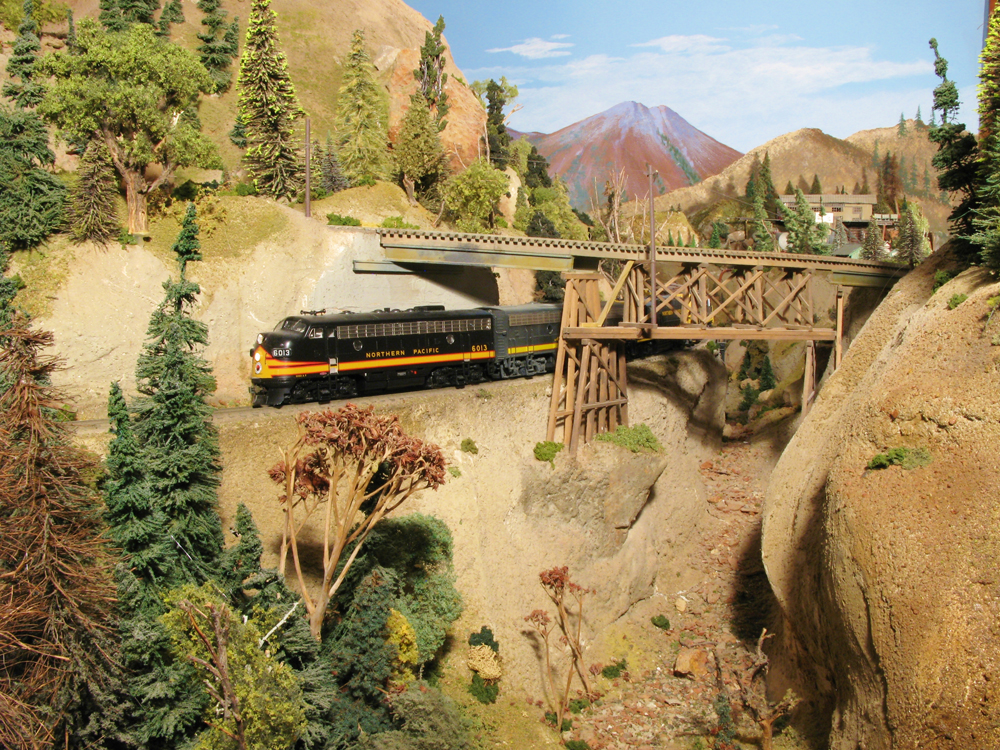
This was the second model railroad Bill constructed using the M&YP theme. His previous layout, a smaller version at his former home, was open for layout tours during the 1999 National Model Railroad Association National Convention in St. Paul, Minn.
The main pieces of the former layout were saved and hauled to Bill’s new home near Excelsior, Minn., on a flatbed trailer provided by his house contractor. The pieces were set into the home before the foundation was completed. Bill was so excited to start working on the model railroad that the basement walls were framed, the drywall was installed, the floors were finished, and the layout room was painted before the rest of the house was completed.
The hidden staging area had to be built before the layout could be set on its legs. The new room was larger than the previous one, so connecting pieces were necessary. Working from an expanded master plan, Bill and his friend, Doug, designed the new pieces so they would be free of turnouts and had room to add mainline runs for each railroad. Some of the original bridges had to be lengthened to account for the new chasms and canyons that were built. Doug estimates that they increased the size of the layout by at least a third.
While Bill and his wife, Judy, were spending their winters in Florida, Doug would be at their suburban Twin Cities home building benchwork, laying track, setting grade elevations, and wiring. When they returned, Bill would get busy building mountains and adding scenery.
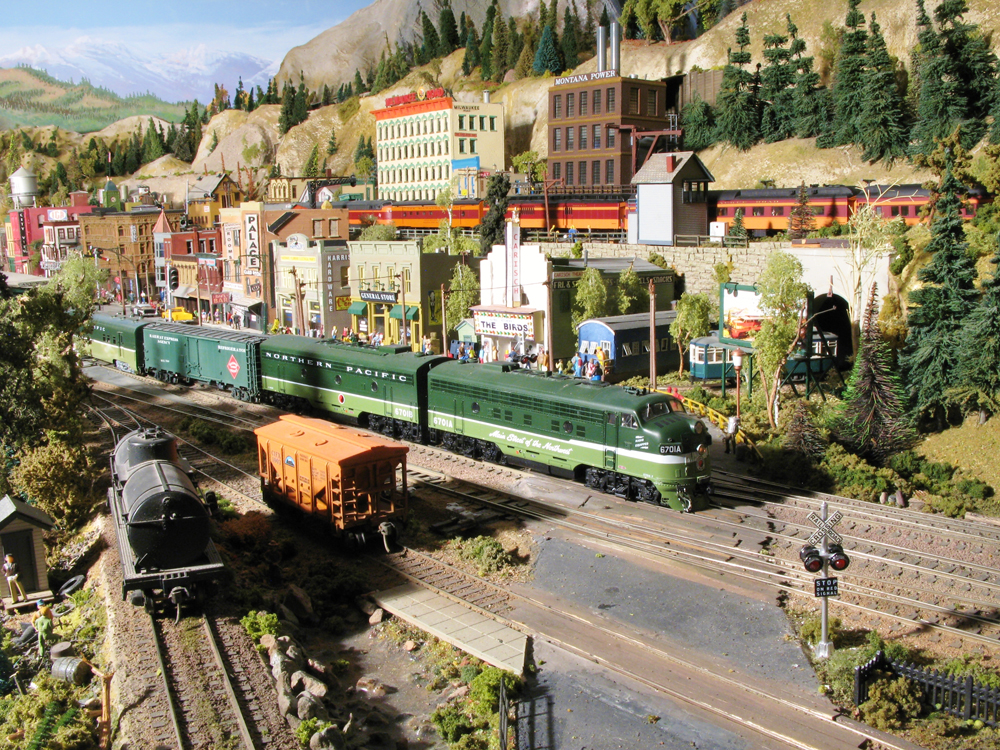
Layout operations relied on computers, allowing trains to be run independently using Bruce Chubb’s Computer/Model Railroad Interface (C/MRI) system. Bill and Doug worked on different scenarios, such as having a train run through the layout and automatically stop in staging. The next train would then automatically be queued to enter the model railroad. With 20 double-ended staging tracks, most able to hold 50-car trains, plenty of action is possible.
Other staging was built into a long bookcase so Bill could display his rolling stock and locomotives in an aesthetic setting. Although there were some switching opportunities available, Bill mainly wanted to sit back and watch trains run.
The 32 x 45-foot Musselshell & Yogo Peak RR was an around-the-walls design with a peninsula and two levels of staging. The track plan accommodated four railroads, the Northern Pacific; Milwaukee Road; Chicago, Burlington & Quincy; and Musselshell & Yogo Peak. The fictional Montana Southwestern shortline acquired from fellow modeler, Tom Settera, ran on trackage rights over the M&YP. The layout was set in the 1960s so Bill could run first- and second-generation diesels and passenger trains.
Trains traversed four mainlines totaling 940 feet. The Musselshell & Yogo Peak, including the Lye-Low Branch, had a mainline run of 390 feet. The other railroads had shorter mainline runs: Milwaukee Road (240 feet); Northern Pacific (230 feet); and Chicago, Burlington & Quincy (80 feet). The railroad had a ruling grade of 1.7 percent, and each railroad had its own minimum radius. The layout could be run as a continuous loop or point-to-point via staging.
The open-grid benchwork was built using 1 x 4s and 1 x 6s. The legs were 2 x 4s. The track was a combination of Shinohara (codes 100, 83, 70) and Micro Engineering (code 55) flextrack on Homasote roadbed. The turnouts were Shinohara No. 4s and No. 6s, while the crossovers were Shinohara No. 8s. They were controlled by Tortise by Circuitron switch machines.
The layout at a glance
Name: The Musselshell & Yogo Peak RR
Scale: HO (1:87.1)
Size: 32’-0” x 45’-6”
Prototype: Northern Pacific; Milwaukee Road; Chicago, Burlington & Quincy; and fictional Musselshell & Yogo Peak
Locale: South-central Montana
Era: 1960s
Style: around the walls
Mainline run: 940 feet
Minimum radius: 28”
Minimum turnout: No. 4
Maximum grade: 1.7 percent
Benchwork: open grid
Height: 52” to 68”
Roadbed: Homasote
Track: Shinohara code 55, 70, 83, and 100 flextrack
Scenery: Hardshell
Backdrop: Paint on drywall
Control: NCE ProCab
Bill had more than 100 locomotives from several manufactures, with the bulk of them being from Kato. Atlas, Broadway Limited, Walthers Proto 2000, Athearn, and Stewart products rounded out the fleet. Several of his locomotives had sound decoders installed. Bill also had a collection of brass locomotives, some of which were repowered with Kato drives. His rolling stock fleet consisted of models from just about every known manufacturer.
Evolution of an operating system
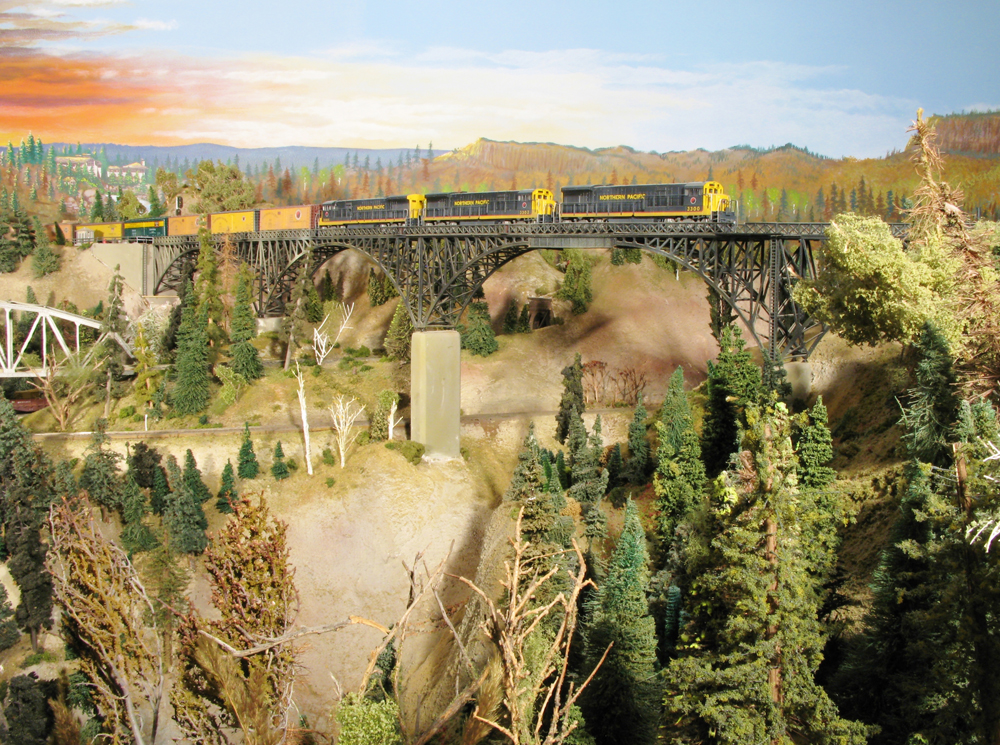
Prior to the advent of Digital Command Control (DCC), Bruce Chubb unveiled C/MRI. His system was a set of electronic modules that allowed a computer to monitor and control devices, including ones used in model railroading. The technology was introduced in a multi-part series in Model Railroader.
There were about a dozen guys in the Twin Cities area that Doug had worked with through his model train business that wanted to use C/MRI. The system offered unique aspects, such as prototypically operating signals in conjunction with track detector circuitry. Bill wanted to have the best technology, so he and Doug decided to go with the best available system of that period.
UPC barcode technology was just coming into play at the time. Barcode strips were applied to the bottom of each locomotive in Bill’s fleet. The barcodes were read by an under-the-track reader that would automatically route each train to the correct staging track. The system was designed so each train would make an appearance on the layout, in sequence, and then return to staging. Then the next train would begin its orbit of the layout.
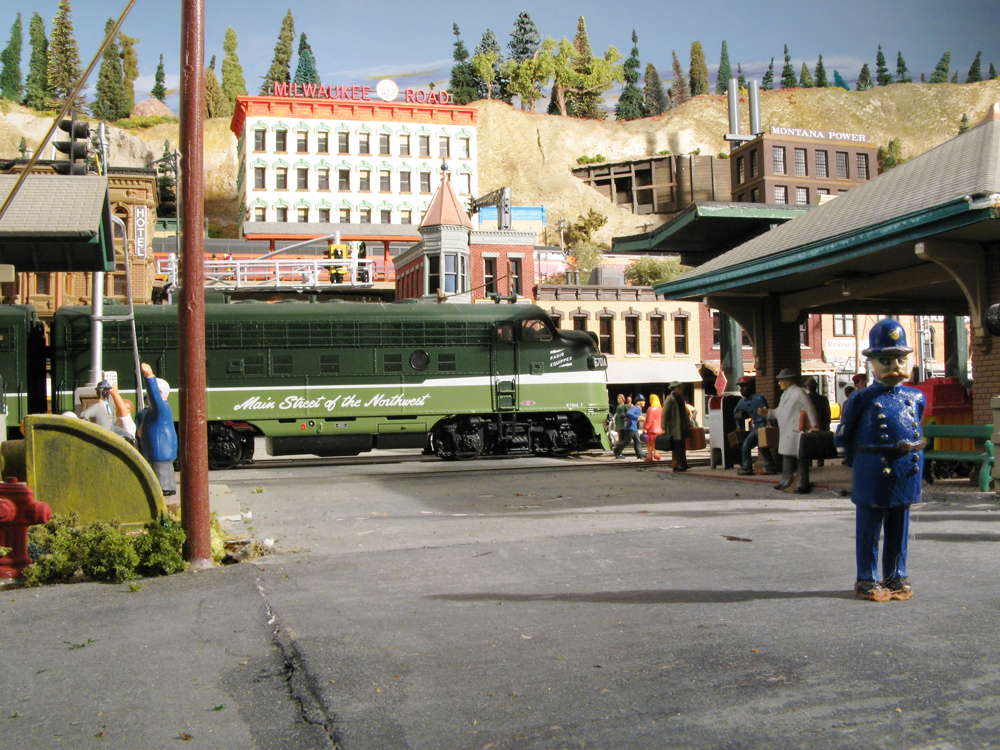
Local Twin Cities N scale modeler and physicist, Don Roback, did software programming for Bill’s layout. Doug understood basic computer logic and was able to relay the logic that he envisioned to make the layout run. Don had the ability to code it.
The entire layout was to be operated from a stationary dispatcher console. Bill and Doug wanted to build a prototypical console using techniques that Bruce Chubb outlined in MR in the 1980s.
Originally, they opted to use GML Enterprises analog throttles. When Bill made the switch to DCC, this idea and the C/MRI system were scrapped. Bill and Doug wanted to integrate the DCC system with JMRI, which would’ve allowed them to configure the layout as originally planned. They’d hoped to run the layout manually, partially manual and automatic simultaneously, or fully automatic through their six NCE ProCab radio throttles.
Scenery
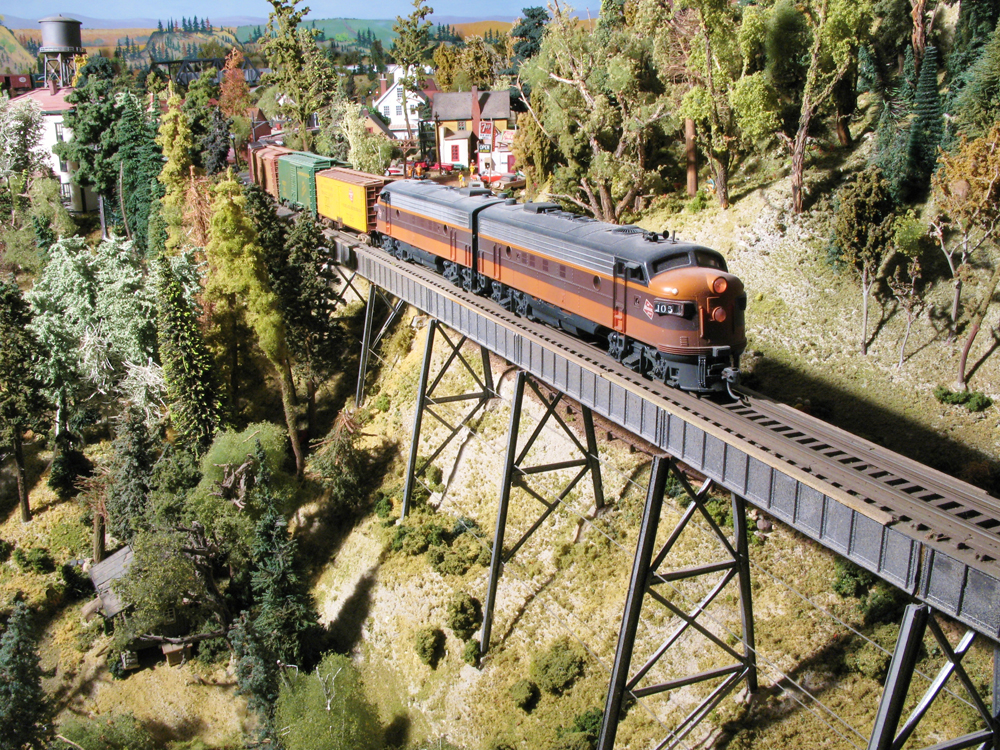
The landforms were built using a combination of chicken wire and screen attached to risers and extruded-foam insulation board. Bill and Doug laid wet newspapers on top of the landforms and then applied paper towels dipped in a soupy mix of Hydrocal. Because they worked in large areas this was a two-man project — one to dip the paper towels and the other to apply them. Once the hardshell had set up they added a layer of “goop” made from a mixture of sand, joint compound, glue, and paint.
Natural sand, dirt, and rocks sourced during railfan trips provided the scenery base. The bulk of the vegetation was commercial offerings from Woodland Scenics and AMSI. Natural materials were also used, including rocks from Montana. Bill’s friend, Lanny Perry, owned the Vortex Sapphire mine near Bill’s Montana home. On one of Bill and Doug’s trips they were invited to see the mine and ended coming home with the back of Bill’s vehicle loaded full of Sapphire ore and rocks. In addition to real rocks, they also used rubber molds to make rock castings.
Most of the trees on the layout were purchased at model train shows from custom tree builders.
Water features were made by painting the bottom of the area black to simulate depth, with shades of brown and tan feathered out to the shoreline. Enviro-Tex, a two-part epoxy, was used for the water.
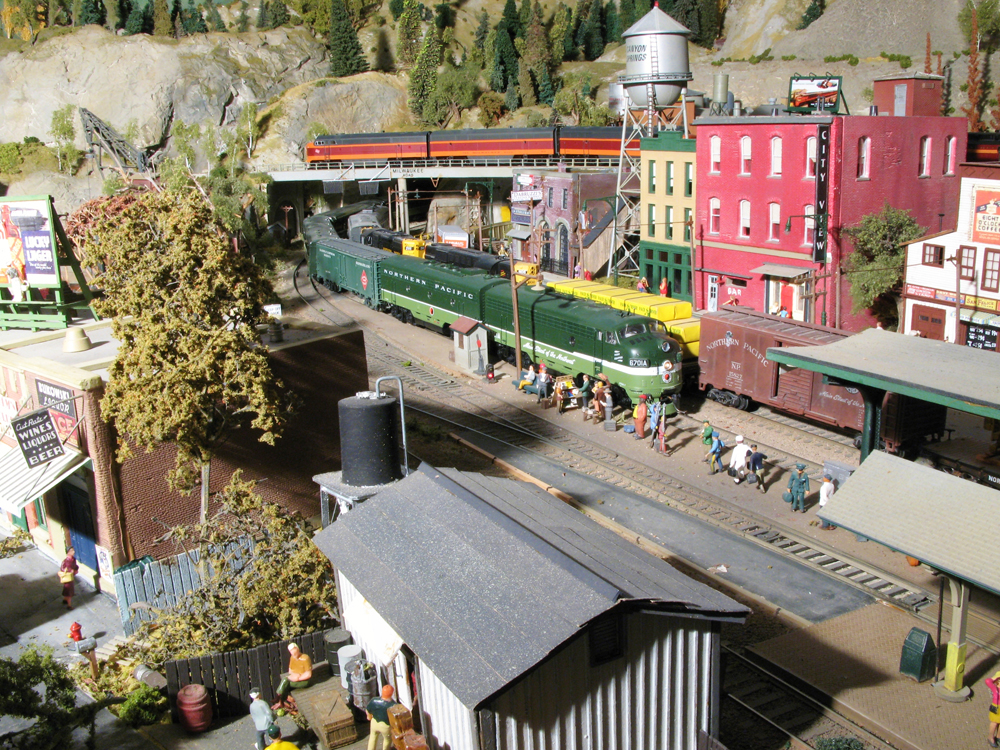
The backdrop was built using drywall. To avoid right angles, coved plywood forms were installed first. Then the drywall was scored and worked into place. The backdrop was painted by Twin Cities artist and former art teacher Andy Ostazeski. He used photographs that Bill had taken in Montana as a guide and matched the colors to the layout’s scenery.
The model railroad was illuminated with incandescent and halogen lighting. Two vent fans were installed in the ceiling to combat the heat that was produced by the lights. The original lighting plan called for a computerized day-to-night sequence and RGB light-emitting diodes, but it never came to fruition.
Operation
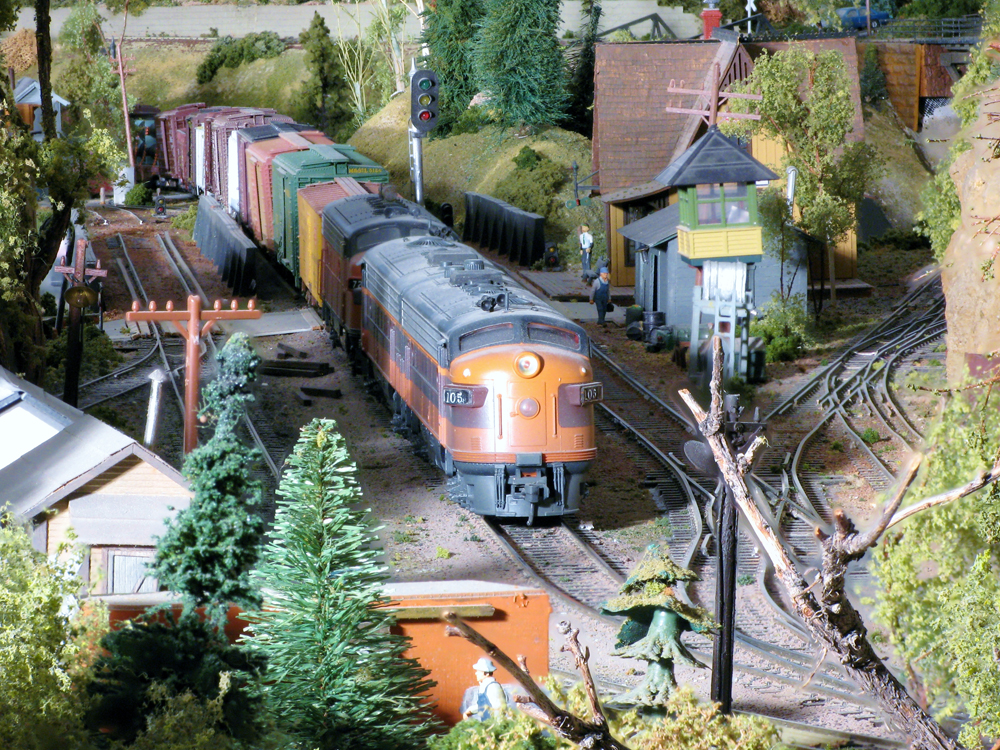
Bill kept true to the late Frank Ellison’s idea that the trains are the actors and at precise times would enter the production from either stage left or stage right. Once their “scene” was completed they exited the stage, in this case to hidden staging. Bill wanted to view his layout as a theatrical performance.
He envisioned a prototypical type of operating scheme with “dead time” built in to avoid a constant stream of traffic. In addition to switching the online industries, there would be interchange traffic between the four railroads.
Sadly, Bill never got to see this operating scheme come to fruition as he passed away in 2009. Doug, with the permission of Bill’s wife, maintained the layout in the Briggs’ Minnesota home. In June 2021, the model railroad was dismantled and moved to Gulfport, Miss. where it will eventually be displayed at the Mississippi Coast Model Railroad Museum for present and future generations to enjoy.
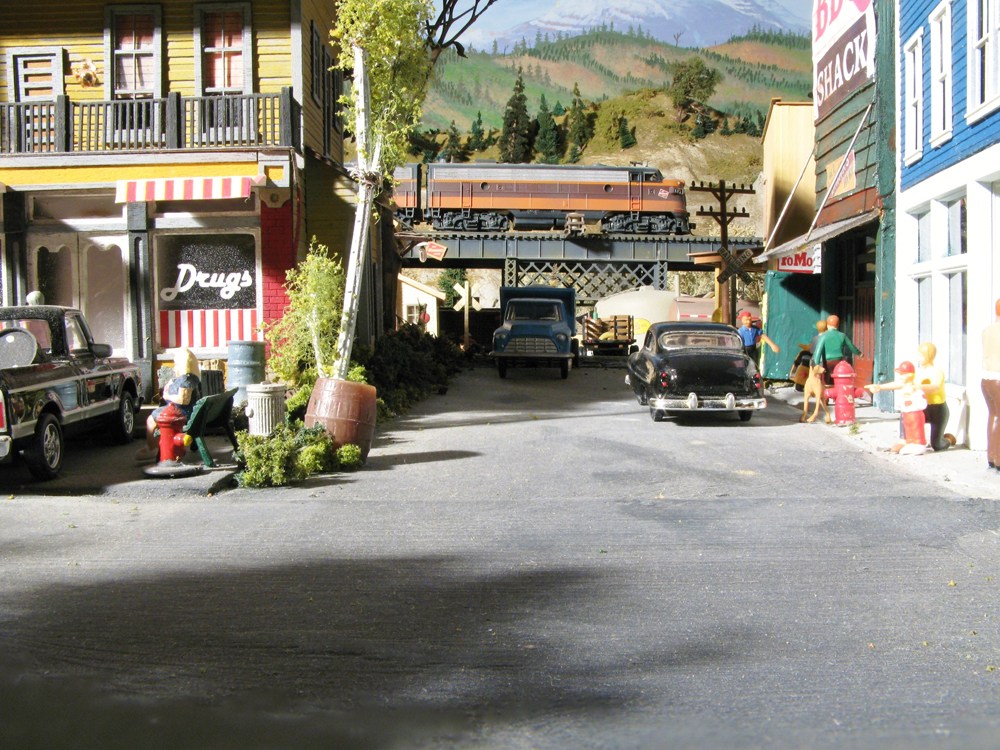
Meet Bill Briggs
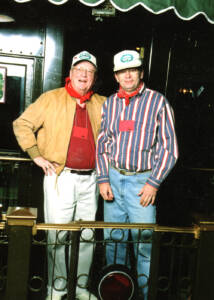
Bill Briggs retired as chairman of a former Cadillac dealership. He also served as vice president of the National Auto Dealers Association. Bill and his childhood sweetheart, Judy, lived near Excelsior, Minn. Besides automobiles and model railroading, Bill loved Western art and served on the Board of the C.W. Russell Art Museum in Great Falls, Mont.





